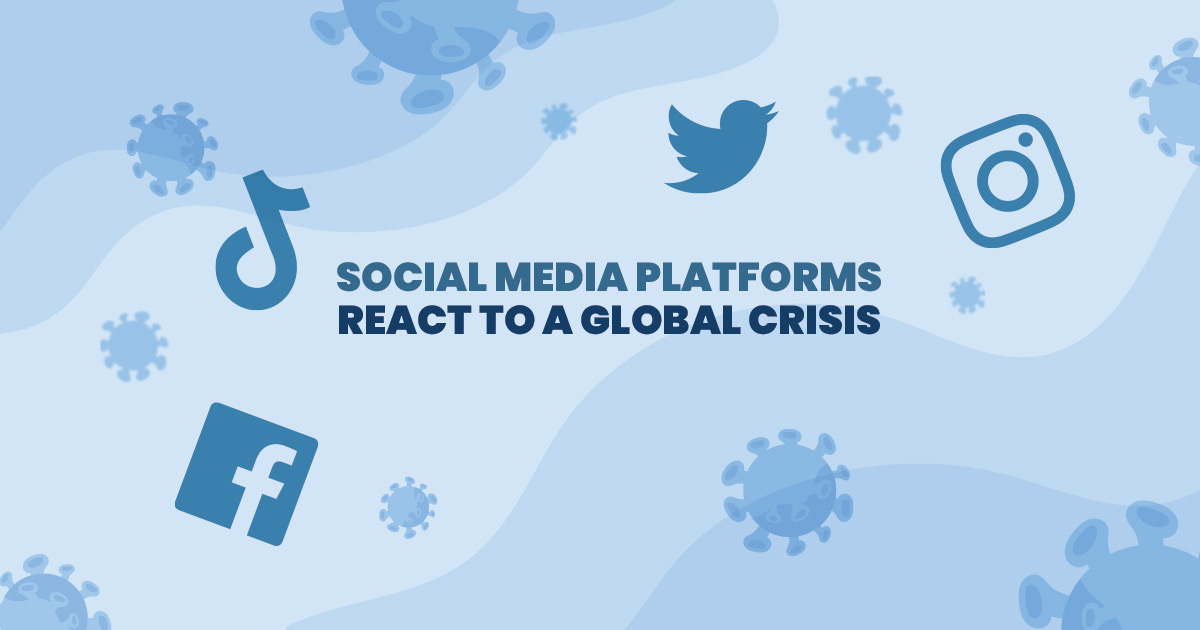As the coronavirus pandemic expands, social media platforms must deal with widespread misinformation and fake news that unfortunately triggers fear and panic to the public. Such false and inaccurate information, often characterised to have deceiving content, suggests – amongst other – (i) ways to avoid getting infected by the virus, (ii) which face masks are the best or even (iii) conclusions regarding the period of quarantine based on unsupported data.
People will obviously seek information regarding COVID-19 across the web. The social media analytics platform Spinklr even indicates that on March 11th, more than 19 million mentions were made on social media, blogs and online news-sites throughout the world. This is not an assumption that all the mentions were either mocking or deceiving, but due to the nature of online sources and the desire for more clicks, it is an undoubted implication that many of them do refer to fake news and/or fake stories. Social media platforms needed to take immediate measures to tackle this spread of misinformation and effectively change this new online behavior being experienced.
Facebook:
The leading social media platform has seen an outbreak of misleading information since COVID-19 began. For that, Facebook has banned ads and trade for face masks, hand sanitisers and disinfectant wipes and even products that trigger fear and panic by promising miracle cures. Instead, they have given unlimited ads to the World Health Organisation (WHO). Additionally, Facebook is promoting the WHO and the Center for Disease Control and Prevention (CDC) in the U.S to searches made about COVID-19. CEO, Mark Zuckerberg announced that Facebook is planning to add an information box at the top of the News Feed which will be managed by the company’s own Coronavirus Information Center and will give real-time updates from trustworthy and reliable sources. Adding to that, Facebook has pledge to invest $100 million in the U.S news industry as well as in worldwide journalism.
Instagram:
Similarly, Instagram proceeded in blocking and restricting coronavirus and covid-19 hashtags (#coronavirus & #covid19) and instead it redirects users to the official websites of the WHO and CDC. The platform also bans ads that take advantage of the crisis situation and bans users from searching filters with Covid-19 related themes, unless they were made by official health organisations. With this in mind, the addition of educational resources was implemented within Instagram search, coupled with stickers that promote safety instructions.
WhatsApp:
In order to stop the spread of misinformation, WhatsApp partnered with the WHO and built the ‘WHO Health Alert’ which is a chatbot that people can use to access reliable information about COVID-19. This messaging service gives the opportunity for nearly 2 billion people to get the latest news on coronavirus including situation reports and numbers.
Twitter:
Removing tweets that might put people at risk is one of the measures that Twitter is taking in order to stop the spread of fake news. In particular, Twitter shared that their safety rules have been edited and contain the banning of tweets that “could place people at a higher risk of transmitting COVID-19“. Fake news on so called “expert guidance” or “treatments” and “diagnostic techniques” will be prohibited.
TikTok:
Aiming to reach younger audience (25-35 years old), the WHO also partnered with TikTok to provide facts and safety tips, informational videos, livestream Q&As and trends that promote health safety. A great example is the #SafeHands challenge which was spread in more than 70 countries. Adding to that, the WHO created a verified TikTok page and shares up-to-date information related to the COVID-19 crisis.
Pinterest:
One of the strictest measures was implemented by Pinterest. Using AI technology, Pinterest fights Covid-19 misinformation by finding keywords associated with misinformation and blocking related pins. Adding to that, keywords related to coronavirus are restricted and instead results from worldwide health organisations are provided, as well as advising users to contact health professionals directly.
YouTube:
YouTube will not remain aloof from this crisis. The WHO website is promoted by a pop-up window on YouTube homepage. Additionally, when people search for COVID-19 related information, the platform prompts them to view only verified videos and removes harmful medical misinformation content. Governments and NGOs are also able to create free ads.
On March 16th, the major social media platforms and their parent corporations – Facebook, LinkedIn, Twitter, YouTube and reddit – along with Google and Microsoft, have issued a joint statement announcing their efforts to fight misinformation during coronavirus crisis: “We’re helping millions of people stay connected while also jointly combating fraud and misinformation about the virus, elevating authoritative content on our platforms, and sharing critical updates in coordination with government healthcare agencies around the world”. All the above aim to primarily keep people safe and informed about the virus and eventually to eliminate the spread of misinformation and fake news. The ultimate goal of social media platforms is to support global and local health experts and follow the instructions provided by official Public Health Communities and Local Governments.

